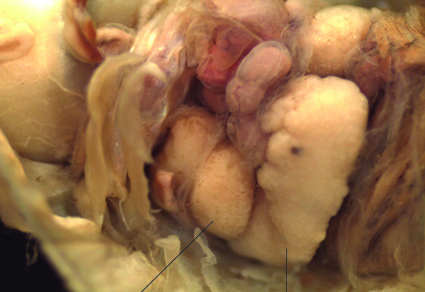Abstract
The continued reduction of suitable natural habitats threatens the existence of earthworms. A project that document earthworm species in areas previously open to the public is ongoing in KwaZulu-Natal. The public areas have been less surveyed for earthworms and a recent survey resulted in the collection of a new species of Proandricus Plisko, 1992. The new species is morphologically close to Proandricus warreni (Michaelsen, 1913), and belongs to one of the eight species groups of Proandricus, the P. warreni group. The difference is in the position of clitellum, number and shape of spermathecae and seminal vesicles. The current distribution of Proandricus bongani sp.n. is limited to Drummond area in KwaZulu-Natal and this is generally the case in the warreni group with the exception of P. warreni that has been collected in more than one locality. The known localities of P. warreni species group are mapped. Indigenous species may live in open access spaces provided there is some pockets of suitable habitat remaining for them.
References
Brown, G.G., da Silva, E., Thomazini, M.J., Niva, C.C., Decaëns, T., Cunha, L., Nadolny, H., Demetrio, W.C., Santos, A., Ferreira, T., Maia, L.S., Conrado, A.C., Segalla, R.F., Ferreira, A., Pasini, A., Bartz, M.L.C., Sautter, K.D., James, S.W., Baretta, D., Antoniolli, A.I., Briones, M.J.I., Sousa, J.P., Römbke, J. & Lavelle, P. (2018) The role of soil fauna in soil health and delivery of ecosystem services. In: Reicosky, D. (Ed.), Managing Soil Health for Sustainable Agriculture. Burleigh Dodds Science Publishing Limited, Cambridge, pp. 197–241. https://doi.org/10.19103/AS.2017.0033.11
Ferreira, T., Santos, A., Demetrio, W.C., Cardoso, G.B.X., Moraes, R., Assis, O., Niva, C.C., Smokanit, M., Knópik, J., Sautter, K.D., Brown, G.G. & Bartz, M.L.C. (2018) Earthworm species in public parks in Curitiba, Parana, Brazil. Zootaxa, 4496 (1), 535.
https://doi.org/10.11646/zootaxa.4496.1.41
Michaelsen, W. (1913) Die Oligochaeten des Kaplandes. Zoologische. Zoologische Jahrbücher Abteilung für Systematik, Geographie und Biologie der Tiere, 34, 473–556. https://doi.org/10.5962/bhl.part.19897
Mwabvu, T. & Schoeman, M.C. (2016) Little overlap in suitable habitat niches between three species of south African millipede genus, Spirostreptus Brandt, 1899. African Journal of Ecology, 54 (2), 248–251. https://doi.org/10.1111/aje.12274
Plisko, J.D. (1992) The Microchaetidae of Natal, with descriptions of new species of Microchaetus Rapp and Tritogenia Kinberg, and the new genus Proandricus (Oligochaeta). Annals of Natal Museum, 33 (2), 337–378.
Plisko, J.D. (1993) Eight new species of Proandricus Plisko, 1992 from South Africa (Oligochaeta: Microchaetidae). Annals of the Natal Museum, 34 (2), 199–220.
Plisko, J.D. (2000) A new arrangement of species-groups in the genus Proandricus Plisko, 1992, with description of four new species and notes on some previously known species (Oligochaeta: Microchaetidae). Annals of Natal Museum, 41, 237–262.
Plisko, J.D. (2002) Nine new earthworm species of Proandricus Plisko, 1992 from South Africa and Lesotho (Oligochaeta: Microchaetidae). African Invertebrates, 43, 183–203.
Plisko, J.D. (2005) Five new South African earthworm species of the family Microchaetidae (Oligochaeta) with exceptional anatomical features. African Invertebrates, 46, 103–113.
Tylianakis, J.M., Rand, T.A., Kahmen, A., Klein, A.M., Buchmann, N., Perner, J. & Tscharntke, T. (2008) Resource heterogeneity moderates the biodiversity-function relationship in real world ecosystems. PLoS Biology, 6 (5), e122. https://doi.org/10.1371/journal.pbio.0060122

